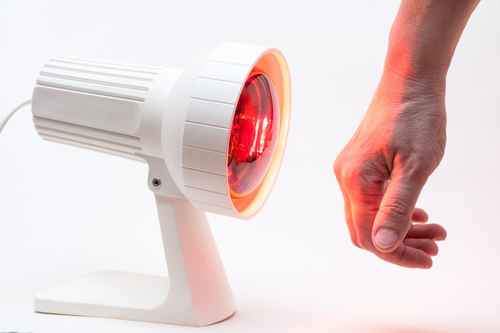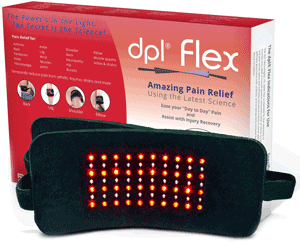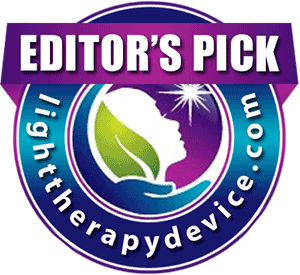Millions of people in the United States live which chronic pain due to autoimmune disorders, degenerative processes or other medical conditions. Narcotic medications are commonly prescribed as a means of pain management. However, the formulations are not without serious side effects. The body also commonly develops tolerance over time, which necessitates dosage increases. There is also the possibility of addiction. In lieu of the problems associated with traditional medications, researchers have developed and tested a number of alternative pain treatments over the years. One of these effective methods involves light therapy.

Table of Contents
About Red Light Therapy
Red to infrared light at wavelengths spanning from 600nm to 1,100 nm penetrate the skin at depths of up to two inches. The light then stimulates light sensors within cells on a molecular level, which initiates a wide range of biological and physiological effects. Studies indicate that red light therapy:
- Boosts blood circulation and plays a role in new capillary formation
- Increases the production and release of ATP, which cells use for energy
- Stimulates cell reproduction and growth
- Relaxes soft tissues
- Reduces inflammation and pain
More Recent Studies
Numerous studies over many decades have proven the benefits of red and infrared light therapy. However, in 2017 researchers from the University of Arizona found that green light therapy also shows promise for managing pain. The study began after Dr. Mohab Ibrahim noticed that being surrounded by environments lush with greenery provided headache relief. He became interested in learning if there was a correlation between the color green and pain relief.
Initial studies involved laboratory animals afflicted with neuropathic disorders. When animals were able to see green LED lights at a wavelength of 525nm, their pain symptoms seemingly disappeared. Trials moved to include people suffering from fibromyalgia. The volunteers reported experiencing symptomatic relief when exposed to the green light. A 2016 study performed at the Boston Beth Israel Deaconess Medical Center found similar results for migraine sufferers.
Scientists are in the process of studying green light further. They do not fully understand how green light affects the nervous system. However, researchers theorize that when green light enters the eye, the wavelength stimulates the brain to release endorphins and other natural chemical compounds that reduce pain and inflammation.
There are many differences between low-level light therapy and conventional forms of light therapy.
- The lack of heat produced by LED lights prevents tissue damage from burns.
- The effects of LED light therapy last for up to six hours after exposure.
- The therapy is non-invasive and has no side effects.
- The devices manufactured to provide light therapy are created using state-of-the-art electronics and are designed for durability.
- LED light therapy devices are typically compact and portable.
- The bulbs and electronic technology behind LED light therapy cost less to use compared to other forms of light therapy, as they require less energy, which also makes them environmentally friendly.
Light therapy has proven beneficial for reducing pain in people suffering from:
- Bulging or herniated discs
- Degenerative or injury-related musculoskeletal pain
- Fibromyalgia
- Chronic inflammation
- Neuropathic pain
Types of LED Light Therapy Devices
Hand-held Wands
The wand-like devices appear similar to hand-held shower heads. Some function using rechargeable batteries and others require plugging into a standard wall outlet, which gives them some degree of portability. The rounded heads come in different sizes and contain varying numbers of green, red, red and infrared or a combination of amber, red and infrared LED bulbs. The light head can easily be placed on any area of the body for up to three minutes before moving on to a different location. The devices are also safe enough to use daily. However, protective goggles must be worn to shield the eyes from the red and infrared light. The wands typically have push-button operation. Basic models simply require turning the device on or off. Others feature buttons that enable the user to choose between light frequencies in addition to setting treatment times.
Table-top Lamps
Lamp models of LED light devices provide the benefit of hands-free treatment. The treatment heads of the lamps are square or rectangular and vary in the number of LED bulbs. The lamps generally rely on an electrical outlet to function, which limits where in a room the device can be used. Some models have panels that are supported by stationary stands. However, others feature flexible necks similar to those commonly found on desk-top lamps. While offering larger treatment heads, the lamps also limit what areas of the body might be effectively treated.
Neck Pillows
The pillows look like typical plush semi-circular pillows. However, an array of red and infrared LED bulbs are embedded on the interior surface that makes contact with the neck. The corded devices are recommended for people suffering from minor musculoskeletal discomfort in the neck region. The flexible pillows can also be used on the limbs.
LED Light Wraps
Flexible LED wrist wraps are designed to be worn on the hand and lower arm to alleviate the inflammation and pain associated with arthritis, carpal tunnel syndrome or sprains. The corded mitts enable the user to insert an entire hand into the device to receive beneficial red-light-therapy for arthritic pain relief. There are also wraps designed to be worn around the neck, the limbs or around the back for pain relief.
Compression Wraps
Portable compression wraps are flexible and conform to body contours, which make them useful for any region of the body. However, when applied to a limb or around the torso, the compression combined with the LED lights enhances blood flow while reducing pain and inflammation. The device can be worn for up to 20 minutes per session for symptomatic relief. The adaptable power sources enable users to plug the wrap into a standard wall outlet, use a USB adaptor for use in a vehicle or to be cord-free using a USB power bank.
Therapeutic Slippers
The open-toed and open-heeled fabric slippers are one-size-fits-all devices made of fabric and feature medical-grade LED lights along the inner surface of the footwear. The corded slippers were created to alleviate the discomfort associated with arthritis, nerve pain or plantar fasciitis.
Pain Relief Mats
The mats come in varied sizes up to six feet in length and nearly three feet in width. Along with red and infrared LED lights, the mats also feature semi-precious stones and PEMF. When activated, the lights turn on, the stones warm and the PEMF technology sends energy waves into the body. The combined effects cause deep tissue relief for a variety of injuries and maladies.



i have osteoarthritis and have neck, back and some knee pain.
My muscles usually feel tight and tense.
Which of your products would help me most?
thank you